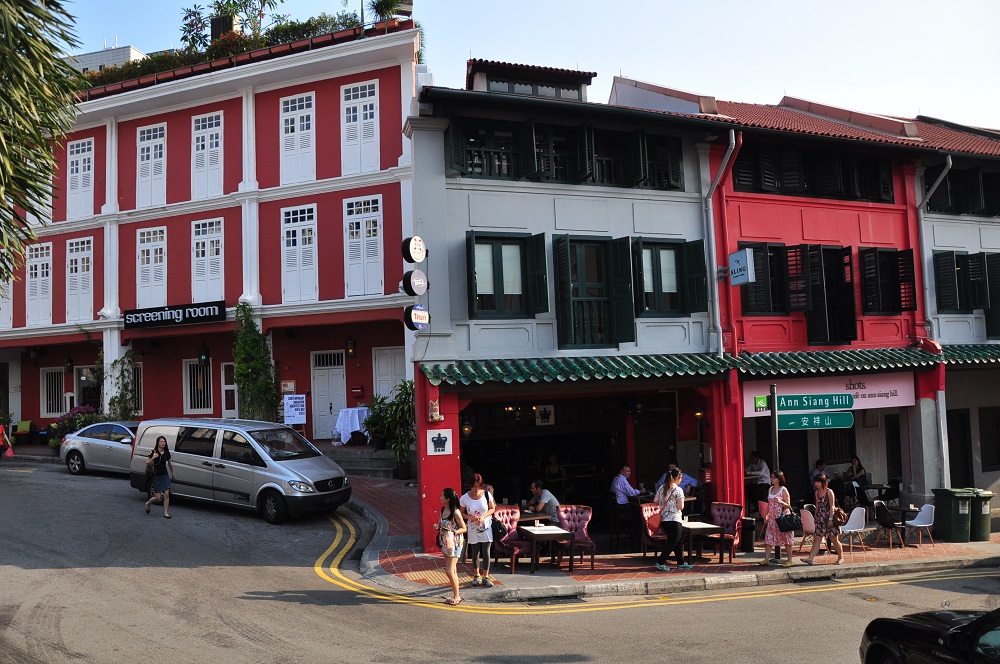Home to long-time culinary stalwarts like Swee Choon Tim Sum Restaurant, Cheng Mun Chee Kee Pig Organ Soup, Beach Road Scissor-Cut Curry Rice and Lavender Food Square, this neighborhood has been a popular foodie destination for years. It’s also home to some of the city’s sleazier nightspots and other “establishments”. But with a new crop of hip eateries, cool bars and creative offices, the depth and sophistication of what Jalan Besar has to offer is growing. While it hasn’t taken over Tiong Bahru as an It spot—Harry Grover of 40 Hands (in Tiong Bahru) and Broadcast HQ (in Jalan Besar) agrees that it’s still “a year away” from becoming a destination in its own right—we reckon Jalan Besar won’t stay under-the-radar for long, especially with the MRT Station of the same name opening in 2017 (even sooner is nearby Rochor MRT Station in 2015). Here’s why.
It boasts a rich history
Jalan Besar, which means “big road” in Malay, was once a swampland of betel nut, nipah palm and fruit trees owned by the Norris brothers in the 1830s. Shophouses, factories, and religious sites later took over the landscape with the onslaught of urbanization after World War I, together with like abattoirs (the street was also known as “the slaughter pig depot in Kampong Kapor”) and municipal refuse facilities. The now-conserved area, lined with Late, Transitional and Art Deco architecture, was also a place of entertainment: New World Amusement Park drew the night crowd with its host of cabaret shows, opera performances and boxing matches, while football fans gathered at Jalan Besar Stadium. For those who want to explore the neighborhood a little more, the National Heritage Board (www.nhb.gov.sg) relaunched its heritage trail of Jalan Besar in August last year, featuring new sites including Syed Alwi Road, Allenby House and International House, People’s Association (formerly Victoria’s School) and Holy Trinity Church.
Hip new eateries have sprung up
One of the earliest to set foot in Jalan Besar was French patisserie Antoinette, which threw open its doors in June 2011. The Broers Café, a minimalist coffee house by barista brothers Kiat and Han, moved in a month later. Fast-forward a year on, Spa Esprit Group (the same people behind big-hitters like Tiong Bahru Bakery, 40 Hands and Open Door Policy) joined forces with the Grover brothers to set up Broadcast HQ, a modish bar-restaurant-retail space housed in a restored two-story shop house. Others loving and contributing to the nostalgic feel of the district include new arrival Kam Leng Hotel, wherechic American diner Suprette is located. The boutique hotel, restored and designed by local agency FARM, retains a ’20s retro vibe (afterall, it was originally built in 1927). Room rates are pretty affordable, too, from $130 per night. Then, there’s Chye Seng Huat Hardware, a contemporary coffee joint with a 360-degree bar, a roaster and a tasting room that also made a point to keep its original Art Deco façade of the building. Located on the second floor of the same building is Tyrwhitt General Company where you can purchase handcrafted bags and accessories made by emerging designers. And the latest to mark their territory in the precinct: Windowsill Pies and Bellwethers, both shy of a month old. The former is siblingowners Jonathan and Sean Gwee’s first sitdown pie and tart shop (they were doing only takeaways and deliveries previously). “We were looking around for a relatively unloved neighborhood and finally settled in this location largely because it’s on the cusp of both town and the east,” says Sean Gwee. “Also, it wasn’t clinically clean liketown and has a touch of wildness to it.” Bellwethers, meanwhile, is a new urbane bistro-bar located in the red-light district of Desker Road sharing a back lane with Broadcast HQ.
Sports are making a splash
Jalan Besar Stadium, also known as the “birthplace of football”, is the home ground for the Singapore LIONSXII soccer team. Now on the field is the second season of Malaysia Super League 2013 and its next game between LIONSXII and Pahang kicks off on Feb 15, 7:45pm. Tickets are available at $88 upwards for the entire season or $4 upwards for indvidual matches from TicketBooth (www.ticketbooth.com.sg). Located within the same premises is Jalan Besar Swimming Complex, one of the very best public pools in the city, and a great place to cool off (its super-cheap admission at $1 on weekdays, $1.30 on weekends, is a major draw).
Arts are arriving
Art establishments, such as At Ease Gallery and The Artists Village, are adding another dimension to Jalan Besar’s eclecticism. Those seeking affordable art pieces should check out At Ease Gallery, which showcases contemporary works by local and international up-and-coming artists. Started by contemporary artist Tang Da Wu in 1988, TAV is Singapore’s first local artist colony. Originally from 61B Lorong Gambas in Sembawang, the community moved several times before settling down in Jalan Besar, where it continues to promote and encourage experimental and alternative arts in Singapore, having produced projects such as Public Art Library (2003).
Rent is cheaper (for now)
There’s nothing like keeping costs low (unlike TB where rents have gone over the roof); no wonder smaller creative enterprises decided to set up offices along the big street. The crew here run the gamut from advertising to architecture—boutique “idea house” DoodleRoom (www.doodleroom.com), brand consultancy Consulus (www.consulus.com), PR agency 20twenty Public Relations (www.20twentypr.com) and interior design firm Kurios Interior Design (www.kuriosdesign.com.sg), as well as architectural firm FUUR Associates (www.fuur.com). The latter is responsible for designing Suprette at Kam Leng Hotel. “We moved here because it was relatively more affordable than the Arab Street area where we were previously at,” says Ken-Hin Teo, founder of FUUR. “Jalan Besar is an interesting neighbourhood, a bit under the radar, but places like Kam Leng Hotel and CSHH are drawing the attention it is getting now.” Holman Chin, who moved into the neighborhood in 2007, doesn’t quite agree that rent for residential properties is necessarily cheaper. “I know there’s another house with three bedrooms at $3,500 a month,” says the deputy director of NUS Development Office. “I was looking for an older place to renovate, and I got exactly that (with the conservation front apartment). It’s very spacious and private.” But renting old spaces, as Gilbert Chua of 9Frames Photography points out (the company moved two years ago to Sin Ming Lane), isn’t without its drawbacks. “The landlord didn’t maintain the shophouse properly, though yes, rental is cheaper and sweeter, and the neighborhood is charming.”
Planning a getaway to Singapore? Here are some things to check out away from Jalan Besar.





